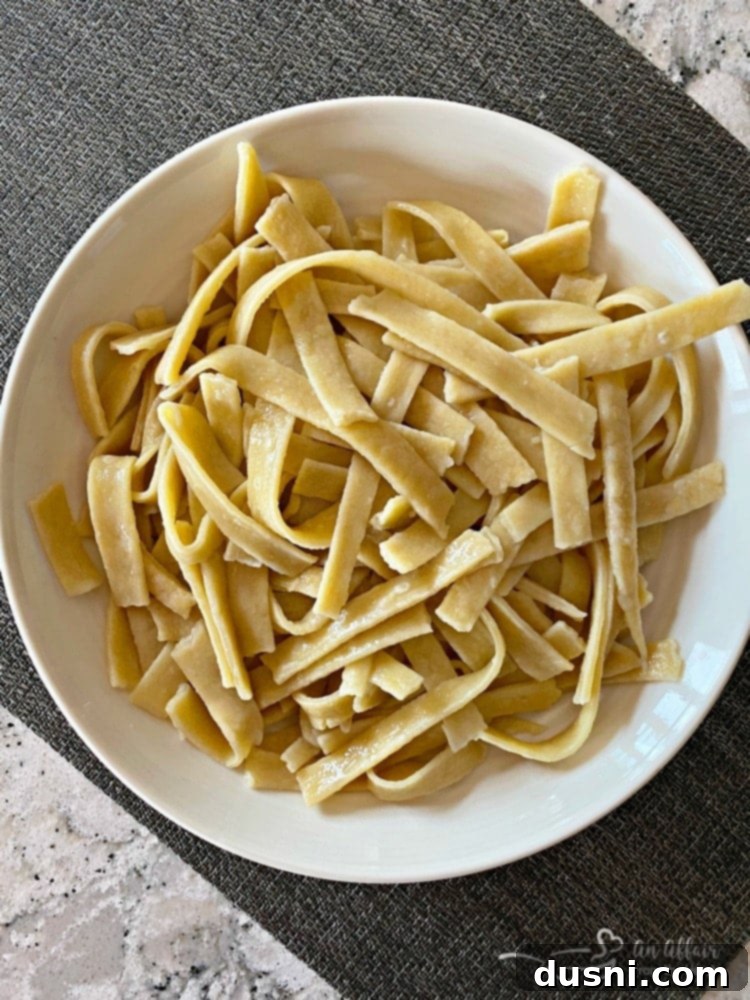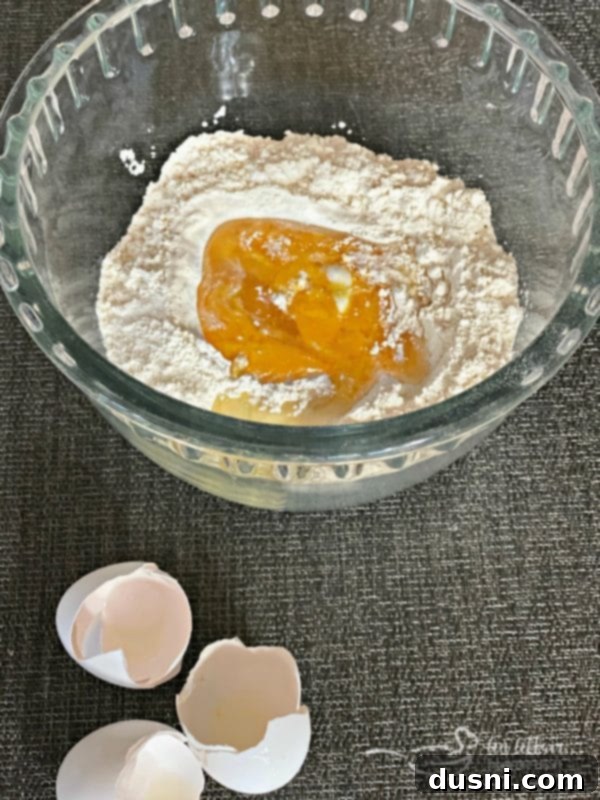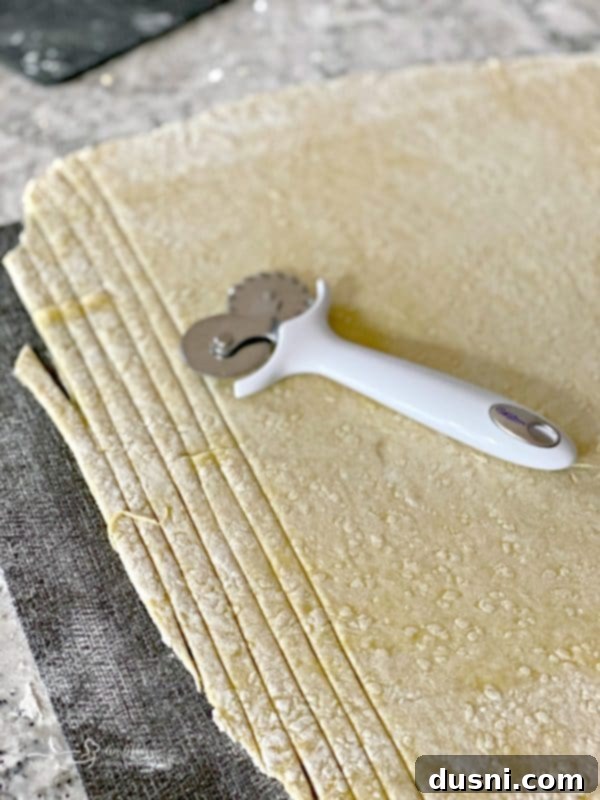Homemade Egg Noodles: A Timeless Recipe for Unforgettable Flavor and Texture
While the convenience of boxed egg noodles is undeniable, the taste, texture, and even the surprisingly short cooking time of homemade egg noodles offer a culinary experience that’s truly in a league of its own. Once you try them, there’s no going back to store-bought!
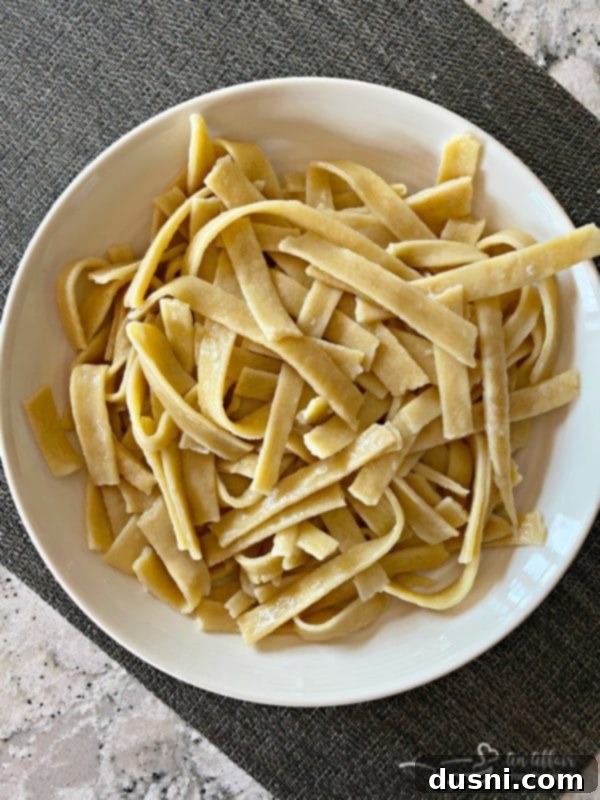
My fondest childhood memories are often tied to the kitchen, especially when my mom would transform simple ingredients into golden strands of deliciousness. We never bought frozen egg noodles; instead, my mom made them from scratch for her legendary homemade chicken noodle soup and hearty beef and noodles. The process of making homemade egg noodles with her was a cherished ritual, a shared moment of creation that I always adored.
I vividly recall the flour-dusted kitchen table, the rhythmic rolling of the dough, and the satisfying slice as perfect noodles emerged. We’d then carefully drape them over kitchen chairs or lay them out on my grandma’s beautifully hand-embroidered flour sack towels to dry. These weren’t just noodles; they were threads of tradition, spun with love and family history, deeply ingrained in my memory.

Homemade Egg Noodles: A Taste of the “Good Old Days”
When people reminisce about the “good old days,” I am pretty sure homemade egg noodles are a significant part of what makes those days so “Good.” They offer a taste that’s not just delicious but deeply nostalgic and comforting in a profoundly personal way. It’s a flavor that transports you back to simpler times, to family kitchens filled with warmth and delicious aromas.
The remarkable thing is that making your own egg noodles is actually quite easy and incredibly rewarding. The process begins with simply mixing a few basic ingredients. Then comes the enjoyable part – playing with the mixed dough, much like kids play with Play-Doh. This tactile experience never loses its charm, and it’s an integral part of the homemade magic. Finally, you roll it out and cut it into perfect noodle strips.
It really doesn’t take too long from start to finish. Of course, this assumes you don’t get *too* carried away with the therapeutic act of working with the noodle dough! The entire process is a wonderful way to connect with your food and create something truly special.
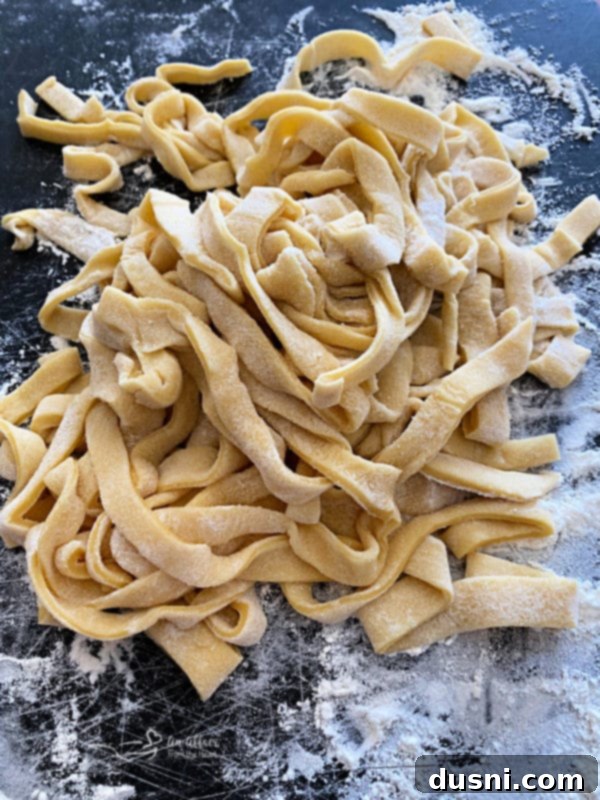
A Childhood Memory: Making Egg Noodles in a Camper
One particular memory stands out vividly: visiting my grandparents at a campsite in Valentine, Nebraska, when I was little. My brother and I would burst from the car, not for the camper itself, but for the enticing green canvas hammocks, complete with white fringe, strung under a tree out front. They were our sanctuary, and we absolutely loved lounging in them.
One chilly evening, my grandma emerged from the camper, her hands lightly dusted with flour. When I asked what she was doing, she proudly declared she’d just finished a batch of egg noodles for our chicken soup dinner, anticipating the cooler weather. My young mind was utterly captivated; “My Grandma just made homemade egg noodles in a camper! She can do anything!” That moment solidified for me the magic of homemade cooking and the boundless capabilities of a determined home cook, no matter the circumstances.
Simple Ingredients for Authentic Egg Noodles
You might be surprised to learn that the secret to delicious homemade egg noodles lies in just a few pantry staples: flour, eggs, salt, a touch of oil, and water. That’s it! You can experiment with different types of flour, such as all-purpose or wheat flour, or even explore other varieties if you’re feeling adventurous. However, for that truly authentic, classic taste and texture – the kind my mom and grandma would approve of – all-purpose flour is your best bet. Honestly, this recipe holds no grand secrets; it’s a timeless classic, often found in that iconic red & white checkered cookbook that graced so many American kitchens.
By sticking to these simple ingredients and a straightforward method, you will achieve a wonderfully soft-textured noodle that cooks to a perfect al dente state in just a few minutes. The only “problem” you’ll encounter is wondering if you made enough, rather than questioning the noodle’s taste or texture. The fresh flavor and satisfying chewiness will have everyone asking for more!
Mixing Your Egg Noodle Dough to Perfection
If you ever took Home Economics in school, you likely learned the classic “well” technique for mixing dough – a foundational skill in baking. To start, simply create a well, or a hole, in the center of your dry ingredients, in this case, the flour. Then, pour the combined wet ingredients directly into this well before gradually incorporating them into the flour. This method helps prevent lumps and ensures an even mix.
As you mix, add more water slowly, just a tablespoon at a time, if needed, until you achieve a smooth, firm, yet elastic dough. The dough should feel pliable and responsive. Once the ingredients are well combined and you can pull the dough into a cohesive rope, it’s time for kneading. Knead and pull it a few times, then ball it up, stretch it out, and twist it back into a rope. This repetitive action is crucial for developing the gluten.

The goal of kneading is to activate and strengthen those strands of gluten. These gluten strands are what give homemade noodles their distinct chewiness and perfect texture, preventing them from becoming mushy when cooked. Proper kneading makes all the difference in achieving truly exceptional egg noodles.
Perfectly Cutting Your Homemade Egg Noodles
Once your dough is smooth and elastic from kneading, separate it into a manageable ball. Then, using a lightly floured surface, roll it out until it reaches your desired thickness. Typically, this will be between 1/8th and 1/16th of an inch thick. The thinner you roll it, the more delicate your noodles will be.
For cutting, you have several options: a noodle cutter, a pizza cutter, a pastry wheel, or even a sharp knife. If you frequently make pasta, a noodle extruder or a pasta machine attachment for a stand mixer can make this step even easier and more consistent. The optimal width for your noodles often depends on the dish you plan to use them in.
For example, for most traditional soups and hearty dishes, I find that cutting my egg noodles about ¼ inch wide provides the ideal balance of substance and texture. Experiment to find what works best for your culinary creations!
Drying Your Homemade Egg Noodles: Tips and Tricks
When I was a kid, we often dried noodles by hanging them over a kitchen chair, or even a broom handle, as my stepdad’s mom did. These charming methods worked well in simpler times, but my current household presents a unique challenge: two energetic boxers. They are not only huge noodle enthusiasts but also remarkably tall and cunning. If I were to leave freshly cut noodles hanging on a low chair, I can guarantee I’d return to find them vanished in a flash, leaving only a tell-tale dusting of flour on their adorable, guilty faces!

This culinary challenge led me to explore other drying techniques. Initially, I used the hanger technique, but positioned strategically out of paw’s reach. While effective, I found the noodles were still slightly damp and doughy on the insides after a few hours. To achieve that perfect, even dryness, I transferred them from the hanger and laid them on a clean tea towel spread across a countertop. This method proved ideal, and the whole process typically only took a couple of hours before they were perfectly dried and ready for the boiling pot.
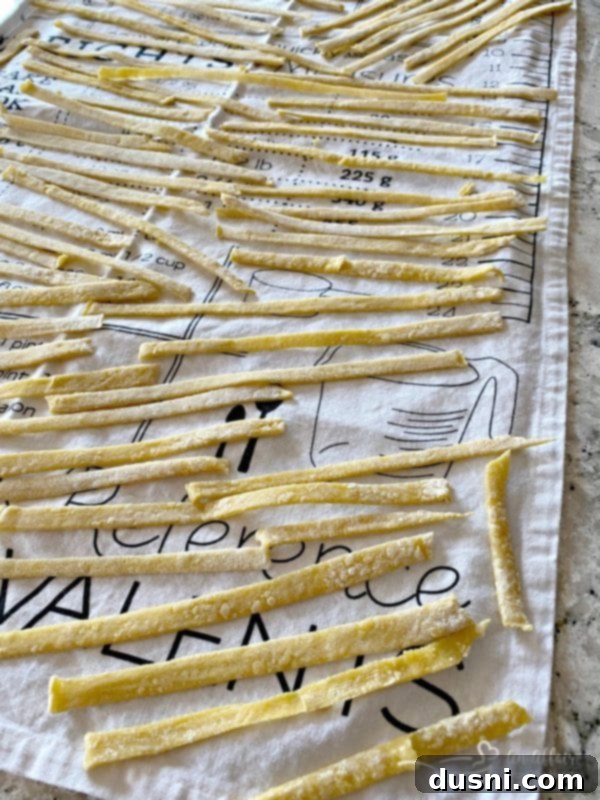
To Dry or Not To Dry Homemade Egg Noodles?
The internet is full of mixed reviews on whether to dry homemade egg noodles before cooking. I was always taught to dry the noodles completely before boiling them. This ensures a firmer texture and prevents them from sticking together. Some culinary experts argue that drying is only necessary if you plan to store them, suggesting you can cook them fresh for a softer, more tender result.
Ultimately, the choice is yours and depends on your preference for texture and immediate use. I typically dry mine completely, as I was taught as a kid, finding it provides the best consistency for a variety of dishes. If you choose to cook them without drying, be aware that they will cook even faster than dried homemade noodles, so keep a close eye on them to prevent overcooking.
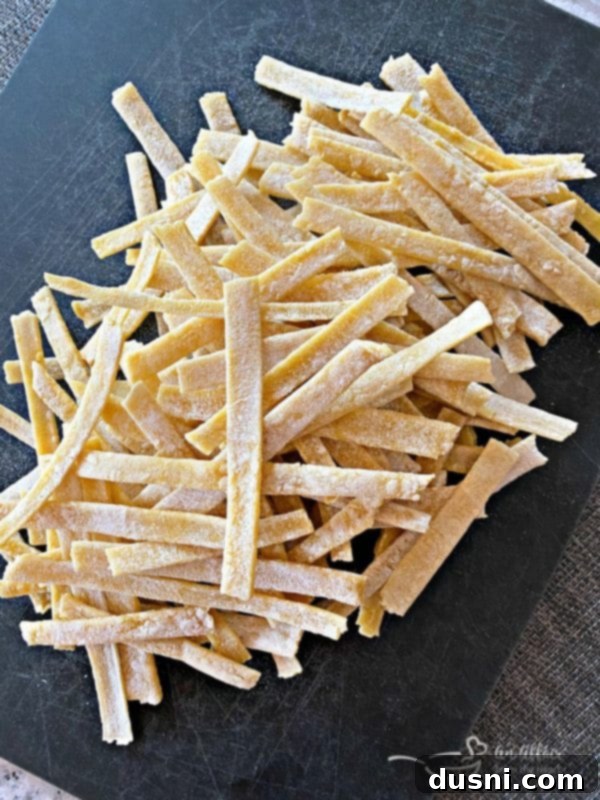
To properly store egg noodles for later use, it’s crucial that they are dried completely. Once thoroughly dry, place them in an airtight container and store them in the refrigerator for up to 3 days. For longer storage, transfer the dried noodles to a freezer bag or freezer-safe container, and they will keep perfectly in the freezer for up to 8 months. This makes homemade noodles a convenient option for future meals!
^Love it? Pin it!^
If you’re eager to try this delicious homemade egg noodle recipe, be sure to pin it to your favorite Pinterest board so you can easily find it whenever a craving for comforting, fresh noodles strikes!
Cooking Homemade Egg Noodles: Quick and Delicious
One of the absolute best parts about fresh, homemade egg noodles is how incredibly quickly they cook. To prepare them, simply drop your noodles into a large pot of salted water that has reached a vigorous rolling boil. Initially, they will sink to the bottom of the pot, but as soon as they rise to the surface, you know they are nearly ready.
Depending on their width and thickness, homemade egg noodles typically cook to al dente in anywhere from 3 to 7 minutes. Keep an eye on them and taste-test to ensure they reach your preferred tenderness. Stir them gently to prevent sticking and ensure even cooking.
These noodles are so flavorful on their own that a simple serving with a pat of butter and a sprinkle of grated Parmesan cheese is a meal in itself. Alternatively, they are incredibly versatile and can be used in practically any noodle dish you can imagine.
If you plan to use them in a soup, add them in the last few minutes of cooking, just before serving. This quick cooking time is essential because, like any delicate noodle, homemade egg noodles can break apart or become overly soft if left stewing in a hot stock for too long.
Delicious Recipes Elevated by Fresh Egg Noodles
From comforting soups to rich stroganoffs and hearty casseroles, homemade egg noodles undeniably elevate every dish they grace. Their superior flavor and texture transform ordinary meals into extraordinary culinary experiences. Here are some fantastic recipes where fresh egg noodles truly shine:
- Italian Chicken Noodle Soup (pictured above)
- Beef and Noodles
- Turkey Noodle Soup
- Hamburger Noodle Soup
- Five Bean Beef and Noodle Skillet
- Polish Noodles and Sauerkraut (Kluski Kapusta Kiszona)
- Creamy Kraut and Mushrooms with Noodles
- 20 Minute Chicken & Noodles
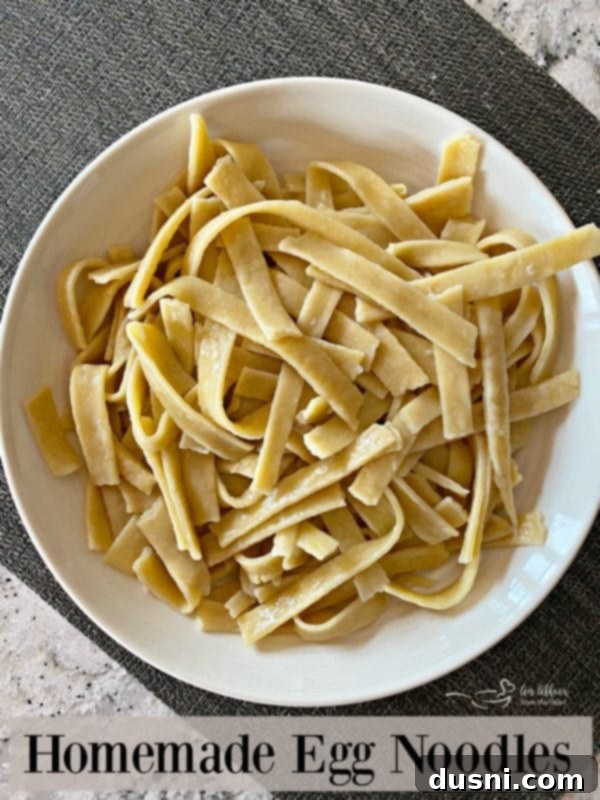
While boxed noodles certainly have their place for convenience, there’s an undeniable joy and satisfaction that comes from making your own noodles from scratch. The unparalleled freshness and rich flavor simply cannot be matched by any store-bought alternative. With just a few simple ingredients and a little bit of time, you can create a culinary staple that will delight your taste buds and bring a touch of comforting tradition to your home. Don’t you think it’s worth a try? 
LIKE THIS RECIPE?
Don’t forget to give it a ⭐️⭐️⭐️⭐️⭐️ star rating and
leave a comment below the recipe!

Print Recipe
Homemade Egg Noodles
Equipment
-
KitchenAid Classic Pizza Wheel
-
Kitchenaid Stand Mixer
Ingredients
- 1 3/4 cups all-purpose flour
- 2 egg yolks slightly beaten
- 1 egg slightly beaten
- 1/2 teaspoon salt
- 1/3 cup water
- 1 teaspoon cooking oil
Instructions
-
In a bowl, add flour. Make a “well” in the center of the flour.
-
Combine eggs, salt, water and oil in another bowl.
-
Add wet mixture to the well.
-
Mix together until ingredients are incorporated.
-
Flour a flat surface. Turn dough out and begin to knead the dough until it’s smooth and elastic. About 8 minutes or so. (alternatively, you can use your dough hook attachment for your stand mixer.)
-
Form dough into a ball. Cover with a clean towel and let sit for 10 minutes before rolling out on a floured surface.
-
Cut noodles 1/8″ thick and 1/4″ wide.
-
Hang or lay on a lightly floured tea towel to dry for a couple of hours.
-
To cook, add noodles to a salted pot of water that has come to a rapid bowl. Noodles will rise to the surface in 4-7 minutes and be cooked. Stir to keep them separated.
-
Serve immediately, or add to soups or casseroles.
Notes
You can cook noodles without drying if you prefer – they will cook faster.
To store egg noodles, make sure they are dried completely, and place them in an airtight container. Store in the fridge for up to 3 days. Or place dried noodles in a freezer bag or freezer container, and store frozen for up to 8 months.
